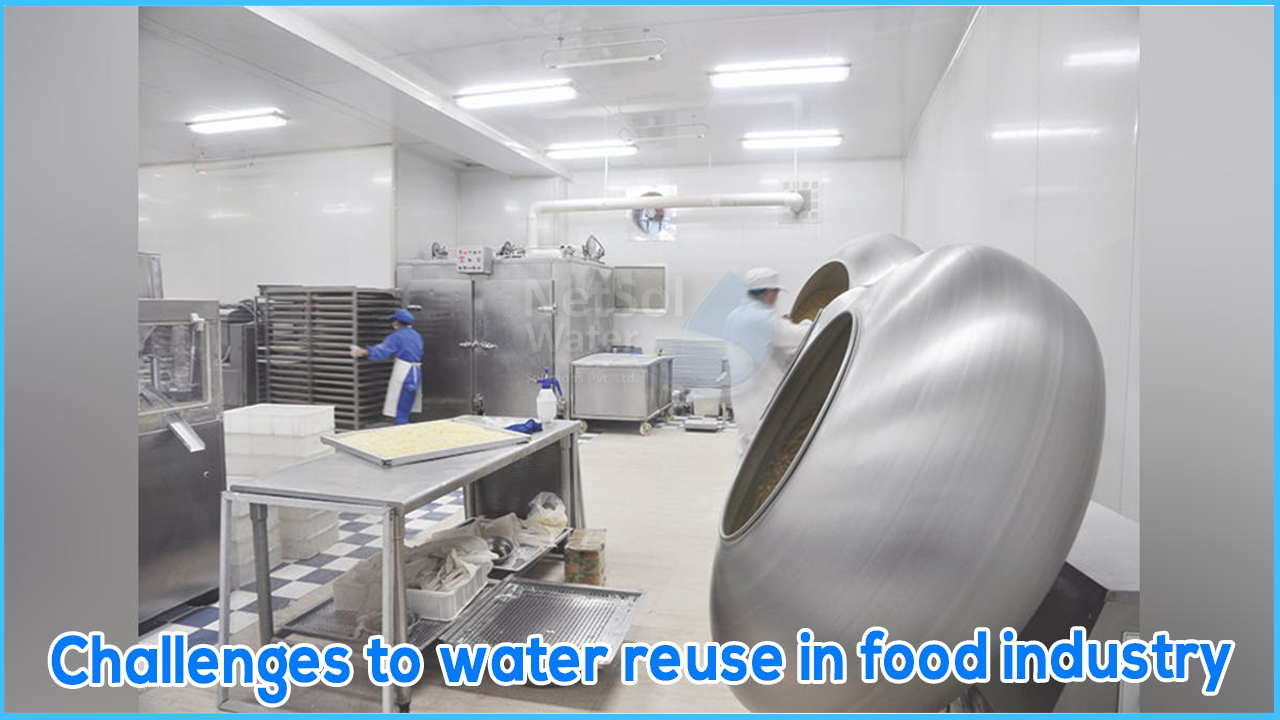Water is used extensively in the food and beverage manufacturing business. One of the most serious issues is the volume of wastewater generated on a continual basis in food processing plants. Water is utilized as a raw resource, a cleaning agent, for boiling and cooling, as well as for transportation and conditioning.
To meet the standards for water reuse, spent process water in the food sector can be desalinated and organics removed. According to food industry requirements, spent process water that is to be reused must be of drinking grade.Other applications, such as boiler make-up water or warm cleaning water, are subject to even stricter regulations.Scarcity of water has a direct impact on all aspects of food production. Water is utilized as an ingredient and in unit operations such as food cleaning, sanitizing, peeling, cooking, and cooling throughout the food manufacturing process. Water is also employed to transfer food items through the process as a conveyor. Finally, between operations, water is used to clean industrial equipment.
To reduce fresh water usage and wastewater generation, there are three basic strategies:
1. Water conservation through the creation of water-efficient unit operations
2. Reducing the amount of water used uncontrollably during processing and cleaning (e.g. repairing leaks, reducing water pressure in some areas of the site, using spray nozzles for cleaning, etc.)
3. Water recycling or reuse, either directly or after reconditioning, within the food processing plant. An evaluation of water usage and characteristics at various process steps in a food plant aids in the selection of prospective water sources for reuse.
CHALLENGES TO WATER REUSE IN THE FOOD AND BEVERAGE INDUSTRY
1. Water Reuse in Food and Beverage Plants Faces Regulatory Obstacles
Local, state, and federal environmental and production quality rules, as well as industry standards, must be followed by food and beverage firms. Each municipality defines how waste water from facilities must be treated and released at the local level. Furthermore, layers of regulation from the state and the fassai help preserve local water quality for the general public, but they can often get in the way of a facility's vision to treat and reuse water, even if it means reducing discharge and so increasing water quality in the area. The reluctance to reuse wastewater for drinkable purposes is a good example.
2. Cultural Aspects of Water Recycling in the Food and Beverage Industry
As previously said, many people are still horrified by the concept of "toilet to tap," which entails reprocessing some waste liquids for drinking or bathing. Many food and beverage manufacturing plants, on the other hand, already reuse some water in a variety of applications where recycled water does not come into touch with the final product. Many plants, for example, reuse water in chillers, boilers, and evaporators, as well as to clean vehicles, floors, and for irrigation and dust control. Some even reuse water to flush the facility's toilets.
Although technologies such as industrial reverse osmosis water treatment systems exist that can provide recycled water that is even purer than municipally treated drinking water, reusing water for cooking, cleaning, and end-product production remains a huge cultural challenge. These innovative technologies allow water to be used as boiler feed water, ice, steam, food washing, preparation, and ingredient water right now.
3. Budgetary Considerations for Water Recycling in the Food and Beverage Industry
Water recycling and reuse technologies exist today that can recover up to 98 percent of the water used in a facility. Despite this, many decision-makers are hesitant to change equipment, primarily due to cost concerns. In light of rising water scarcity, building industrial water treatment systems to reuse and recycle water can be viewed as a long-term investment in the company's and planet's future. Food and beverage establishments can also save money on water by reducing their reliance on outside water resources and improving their own water security in the face of drought and other environmental or municipal infrastructure issues.These operational cost savings can typically be used to offset construction costs in as little as a year. Food and beverage manufacturers who modernize their water treatment systems will be better able to respond to changing external water resource conditions and meet, if not exceed, corporate sustainability targets.




